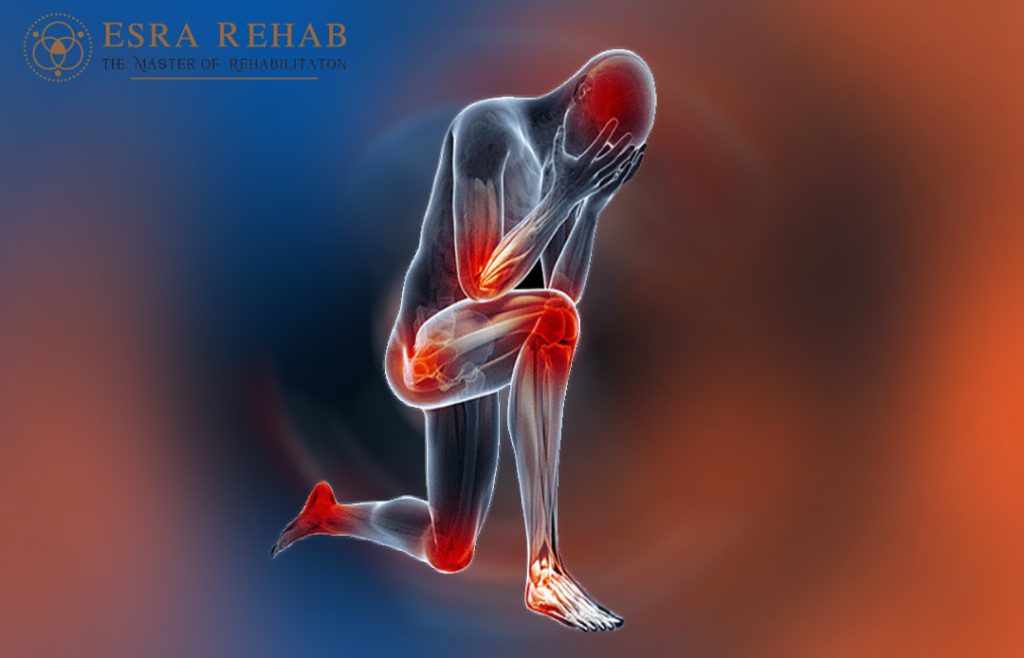Introduction
In the world of sports and athletic training, one of the key challenges athletes face is balancing high-performance demands with injury prevention and recovery. Athletes often push their bodies to the limit, increasing the risk of injuries, pain, and muscle fatigue. This is where physiotherapy benefits play a crucial role. Physiotherapy is not just about treating injuries but also optimizing athletic performance and promoting overall sports conditioning. It covers a range of techniques, from pain management and muscle recovery to performance enhancement and injury prevention.
This comprehensive guide will explore how physiotherapy can transform an athlete’s journey, turning pain into performance. We’ll delve into various physical therapy techniques, highlight the role of sports rehabilitation, and share effective methods for improving flexibility, strength, and functional movement. We’ll also cover preventive strategies, including stretching exercises, strengthening routines, dynamic stretching, and more, to ensure that athletes stay in peak condition.
Whether you’re a professional athlete, a weekend warrior, or a coach looking to maximize your team’s performance, understanding the benefits of physiotherapy can be a game-changer. Let’s dive into how physiotherapy can elevate athletic training, enhance recovery, and keep athletes in top form.
Section 1: Physiotherapy Benefits in Athletic Training
Pain Management and Relief
One of the most immediate benefits of physiotherapy is pain management. Athletes often suffer from muscle strains, ligament sprains, and joint discomfort, which can significantly impact performance. Sports physiotherapy uses techniques such as manual therapies, massage therapy, and dry needling to alleviate pain, reduce inflammation, and accelerate healing.
These interventions not only address acute pain but also prevent chronic pain conditions that can develop from repetitive stress and overuse injuries. By using targeted exercise therapy and specialized techniques, physiotherapists can help athletes recover faster, allowing them to return to training and competition more quickly.
Injury Prevention and Management
Injuries are an unfortunate part of athletic training, but with the right approach, they can be minimized. Physiotherapists focus on injury prevention by identifying potential risk factors and correcting movement patterns. This can include assessing functional movement and joint stability to prevent issues like ACL tears, hamstring strains, and shoulder dislocations.
Key strategies include:
- Strength training to build resilience in muscles and joints.
- Stretching exercises to enhance flexibility and range of motion.
- Warm-up techniques and dynamic stretching to prepare the body for intense physical activity.
By incorporating these methods, athletes can significantly reduce the risk of injuries and maintain optimal performance.
Sports Rehabilitation and Recovery
Physiotherapy is essential for athletes recovering from injuries. Sports rehabilitation focuses on restoring an athlete’s strength, flexibility, and function post-injury. This includes a personalized program of rehabilitation exercises designed to gradually return the injured area to full strength.
The use of modalities like kinesiotaping, manual therapies, and dry needling can enhance the recovery process by promoting blood flow, reducing swelling, and supporting muscle function. Physiotherapists also employ sports conditioning programs that incorporate exercise therapy to ensure athletes not only recover but come back stronger and more resilient.
Section 2: Techniques and Methods for Enhanced Performance
Stretching Exercises
Stretching is a fundamental aspect of maintaining muscle flexibility and preventing injuries. It is categorized into dynamic stretching and static stretching.
- Dynamic Stretching: These are active movements that take your muscles and joints through their full range of motion. Ideal as part of a warm-up routine, dynamic stretches increase blood flow and muscle temperature, preparing the body for high-intensity activity. Examples include leg swings, arm circles, and walking lunges.
- Static Stretching: This involves holding a stretch for 15-30 seconds to improve muscle flexibility. It’s more suitable for the cool-down phase after training, helping to relax muscles and prevent stiffness.
Strengthening Routines
To boost athletic performance and prevent injuries, athletes need to focus on strength training. Physiotherapy includes tailored strengthening routines that enhance muscle endurance, power, and stability. Key exercises may involve:
- Bodyweight exercises like squats, lunges, and push-ups.
- Resistance training using bands, dumbbells, or machines.
- Core stabilization exercises to improve balance and prevent lower back pain.
By integrating these routines, athletes can build stronger, more resilient muscles, reducing the risk of strains and improving overall performance.
Warm-up Techniques
A proper warm-up is essential for optimizing athletic performance and preventing injuries. Physiotherapists recommend a combination of cardio, dynamic stretching, and sport-specific drills to increase heart rate, improve muscle elasticity, and enhance joint mobility.
An effective warm-up might include:
- 5-10 minutes of light cardio (e.g., jogging or cycling).
- Dynamic stretches like high knees, butt kicks, and side shuffles.
- Activation exercises such as planks and glute bridges to engage key muscle groups.
These techniques prepare the body for the demands of training, helping athletes perform better and reduce injury risk.
Recovery Strategies
Recovery is as important as training itself. Athletes who neglect recovery are at a higher risk of injuries and burnout. Physiotherapy emphasizes recovery strategies to enhance muscle repair, reduce soreness, and optimize overall performance.
Effective recovery techniques include:
- Massage therapy to improve circulation and relax muscles.
- Cryotherapy and heat therapy to manage inflammation and pain.
- Foam rolling to release muscle tightness and improve flexibility.
- Active recovery sessions like yoga or swimming to maintain mobility.
These strategies ensure that athletes can recover fully, ready to tackle their next training session or competition with renewed energy.
Section 3: Specialized Physiotherapy Techniques
Kinesiotaping
Kinesiotaping is a therapeutic technique used to support muscles and joints without restricting movement. It’s particularly beneficial for managing pain, reducing swelling, and providing extra support to injured areas. Athletes often use kinesiotaping for conditions like sprains, muscle strains, and tendonitis.
Manual Therapies
Manual therapies include techniques like joint mobilization, soft tissue massage, and trigger point therapy. These hands-on methods are designed to relieve muscle tension, improve joint mobility, and enhance blood flow, promoting faster recovery and optimal performance.
Dry Needling
Dry needling involves inserting fine needles into trigger points or tight muscle areas to relieve pain and improve function. It’s particularly effective for athletes dealing with chronic muscle pain or stiffness, as it helps release muscle knots and restore normal movement patterns.
Exercise Therapy and Functional Movement
Physiotherapy also includes exercise therapy tailored to each athlete’s specific needs. This may involve:
- Functional movement training to enhance coordination and agility.
- Plyometrics for explosive power.
- Balance exercises to improve stability and prevent falls.
These exercises not only aid in recovery but also contribute to long-term performance enhancement, making athletes more efficient and resilient in their respective sports.
Section 4: Enhancing Athletic Performance Through Physiotherapy
Flexibility Improvement
Improving flexibility is crucial for reducing injury risk and enhancing performance. Physiotherapists use various techniques, including PNF stretching, to increase flexibility in specific muscle groups. This can lead to better range of motion, improved movement efficiency, and enhanced athletic output.
Muscle Recovery
Post-training muscle recovery is vital for athletes who train intensively. Techniques like contrast baths, compression garments, and electrotherapy are used to accelerate muscle repair, reduce lactic acid build-up, and alleviate muscle soreness.
Sports Physiotherapy in Training Optimization
By incorporating sports physiotherapy into training programs, athletes can optimize their routines, focusing on areas such as:
- Correcting muscle imbalances.
- Enhancing neuromuscular coordination.
- Improving endurance and stamina.
With the guidance of a physiotherapist, athletes can fine-tune their training to maximize their strengths and address weaknesses, leading to a higher level of athletic performance.
Conclusion
Physiotherapy plays an essential role in transforming an athlete’s journey from pain to peak performance. By focusing on pain management, injury prevention, and recovery enhancement, physiotherapy ensures that athletes can train harder, recover faster, and achieve their full potential.
Whether you’re dealing with an injury or looking to boost your athletic training, incorporating physiotherapy into your routine can be a game-changer. From personalized exercise therapy to advanced techniques like dry needling and manual therapies, physiotherapy offers a holistic approach to achieving optimal health and performance.
By understanding and applying the principles outlined in this guide, athletes and coaches can build more effective training programs, prevent injuries, and ensure sustained peak performance. Don’t let pain hold you back—embrace the benefits of physiotherapy and unlock your athletic potential.



